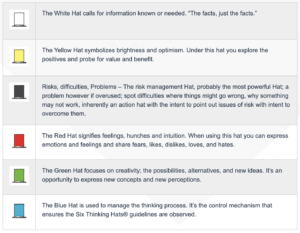
Forming Healthy Habits | WEX Podcasts
The last 18 months has awakened new ways of thinking for many. During which, resilience became essential. As a result, new habits have formed - and we began to rethink our usual routines.
For example, 64% of people in the UK chose to shop locally. Australian consumers began to make more conscious shopping choices. 52% of Americans volunteered for the first time during the pandemic. And many began to pay closer attention to their mental and physical health around the globe.
Now, as we emerge from the pandemic, it will be interesting to see which new habits will stick. This begs the question: What is a habit? (And how do we cultivate them?)
Following up on their previous discussion, Think Change co-founder and occupational psychologist Gary Luffman sat down with Webexpenses CEO, Adam Reynolds, to discuss habits.
Habits and why we have them
Defined by Merriam-Webster as “a settled tendency or usual manner of behavior”. Simply put, a habit is an automatic (unconscious) response to a situation.
As humans, we have many habits of which we may not be consciously aware. Gary used the example of getting ready in the morning: “When you wake up in the morning and get dressed, which leg do you put into your trousers first?”
Take a few seconds to think: Is it left or right? Is it the same every day? You may not recollect immediately. Perhaps you played it out in your head.
This is the essence of the habitual: Doing without thinking. Because habits help us to develop shortcuts in familiar situations, “40-80% of what we do is driven by autopilot,” according to Gary.
"Habits are our brain's way of increasing its efficiency." Our brain turns daily actions and behaviours into habits, so we would do them automatically and without too much thought – thus freeing up our brainpower for other more important challenges.
Habits in the workplace
New habits have formed as we adapted to the virtual workplace. For example, we realised last week that our team has created verbal cues while on video calls. One person says “ah,” another “um,” and someone else “sooooo” to indicate they would like to speak.
Traditional, longer-standing habits form within an office culture. While discussing workplace habits, Adam provided the example that “we have the mindset of always needing to be busy.” The downside of which is that this habit takes time away from rethinking situations.
Gary shares an example: “In a meeting, you often shortcut what you want to see or hear and predict the next steps. As you already understand the structure and pace of the meeting, you can feel in control of the outcome. Whereas, if you’re a new starter you may be less responsive and tired because it’s the start of a new habit forming.”
How to cultivate more productive habits
Adapting or starting a new habit can introduce new ideas and challenge how you respond to a situation. The most effective way of breaking out of existing habits is to introduce a different approach to your usual routine. Adam and Gary discuss different ways of approaching this. There are two methods:
De Bono Six Thinking Hats model
Six Thinking Hats introduces six character roles. Each person within the group has to mentally wear and redirect their thoughts in reflection of the character’s personality and motives. De Bono’s method challenges you to approach a situation differently and essentially step away from your habitual way of thinking.
Tip: To use this method effectively, try giving an analytical thinker the red hat which signifies feelings, hunches, and intuition. And for an emotive thinker, challenge them with the white hat which bases information on “just the facts.”
Follow 5 steps from Think Change Consulting’s ‘Change Recipe’
The Change Recipe is a great brainstorming activity that can be used within a group or individually. It challenges you to break down your habit step-by-step to fully grasp how you’ll reach your goal:
-
-
- Self-generated insight:
Why and how do we make the change? - Vision:
Picture the end state and steps in between. - Positive motivation:
Focus on the positive and enjoy the journey ahead. - Attention density:
Think about consistency, reminders and repetition - Progress & Reward:
Seek progress, not perfection. What do you achieve if you stick with a habit, and what are the consequences if you don’t?
- Self-generated insight:
-
Follow the link for more on Gary’s Change Recipe method.
How to start a new habit
Before you get started trying to develop a new habit, think about these three questions:
-
-
- Could you be using your free time more proactively?
Adam mentions how he checks his diary more actively during free periods throughout the day. Something as simple as this can encourage more interactions or give yourself time to focus on a task. - Are you thinking about the now, rather than the end goal?
Gary reiterates, “It’s progress, not perfection!” - Lastly, focus on something you’ll enjoy.
Are you choosing a habit that you have no passion for? Try focusing on something you enjoy and enjoy the journey that comes with it.
- Could you be using your free time more proactively?
-
It’s important to keep in mind that when retiring an old habit, and/or creating a new one, it is easier said than done. According to Gary, it takes an average of 66 days for a habit to fully form.
Adam suggests, “Instead of beating yourself up when you don’t achieve your new habit, think: How can I learn and move forward?”


